The economy is looking a bit wobbly, ULEZ zones are springing up everywhere, petrol bikes are set to be banned in 2035. So – it’s the perfect time to be thinking about buying a future classic…
The idea of a future classic is to identify bikes which are a bit unloved at the moment – but could rise in value in future, either because there’s something unique about them, or they end up being a bit rare.
That rarity can come about in two ways: the obvious path is where very few were sold to start with, like a Honda RC30. The second way is where there were a lot of the bikes initially, but they all gradually disappeared through being stolen or crashed, or simply just wearing out and being scrapped.
The standard Honda VFR750F which was sold alongside the RC30 in 1988 was massively more common at the time, but is now rare to see on the road in perfect order. A perfect VFR750F won’t be anywhere near as valuable as an RC30, but it’s still a great collectors’ bike, and worth much more than it was in say 2000 when it was just a good sport tourer.
This applies to a lot of very desirable bikes now: if you ever find an old Motorcycle News Bikemart from the late 1990s, just look at what Kawasaki H2 750 triples and Suzuki RG500s sold for. They were unloved, archaic two-stroke stinkwheels, and it was hard to give them away. Now, they’re heading for record-breaking status at many bike auctions each year.
We’re not recommending RG500s here though – that horse has bolted, and its fox has been shot. Like the RC30 and bikes like the Ducati 888 SP range, these are now very expensive, and the only chance to buy cheaply is if you manage a random ‘surprise’ buy from someone who doesn’t know what they have.
Rather, our top-ten is a list of Japanese and European performance bikes, from around 20-25 years ago, which are available now for decent cash. They all make good bikes to ride, so you can take your ‘investment’ out and about on sunny days if you fancy.
Most parts are still available for them too, which is useful when you’re doing a restoration. None of these are likely to make you a fortune – but they’re cheap, fun, useful ways into the future classic world…
1998 Honda VTR1000 Firestorm
This (along with the Suzuki TL1000) was an attempt by Honda to take on pesky Italian firm Ducati, with its unstoppable 916 Superbike. A litre-class V-twin often had the measure of 750cc fours both in Superbike racing, and on the road, thanks to its booming low-down grunt and beefy midrange. This first VTR1000 wasn’t a racebike, but the later VTR1000 SP1 would use the same engine layout in a proper superbike chassis, with some success.
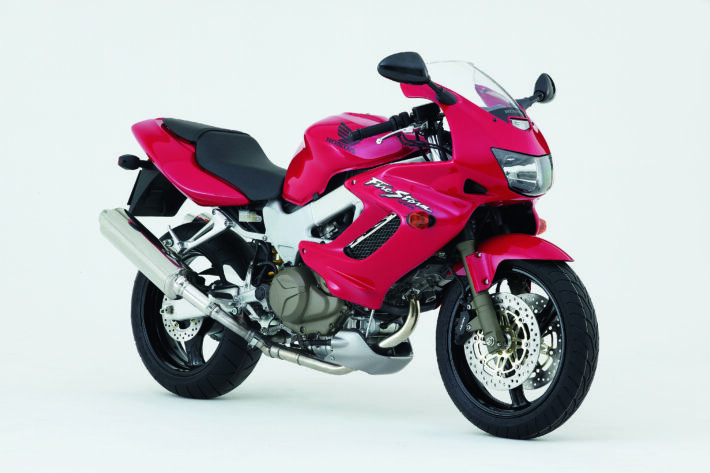
The Firestorm is a classic mid-90s Honda. Well-built, with good performance, and handsome styling. The engine is unique: a big V-twin with two massive 48mm carbs, which will appeal to EFI-phobes, and which gave great performance at the time. Around 110bhp is a bit ‘meh’ for a litre bike now, but the way it arrives is still beguiling.
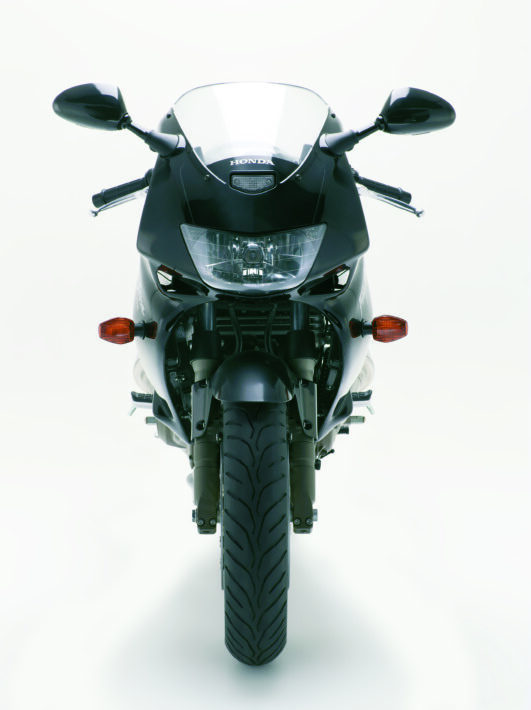
The chassis was also novel, with a ‘pivotless’ swingarm setup. There was a pivot of course, but it was in the crankcases not the aluminium twin spar frame. That was fine for road use, but on track, the extra flex was a handicap. The half-fairing gives just enough wind protection for 170mph on the autobahn, and the brakes and suspension are premium sporty-road fare, well on spec for the time.
Nowadays, a nice Firestorm makes a lovely sunny Sunday blaster, with the only downside the rubbish fuel consumption and small 16 litre fuel tank.
2001 Honda CBR600F Sport
Back at the turn of the century, Japanese 600cc sportsbikes were everywhere, and the Honda CBR600F was the king of the hill. Despite its road focus, it smashed allcomers on track, yet was a fabulous commuter and sports-tourer, and was a genuine classic all-rounder.
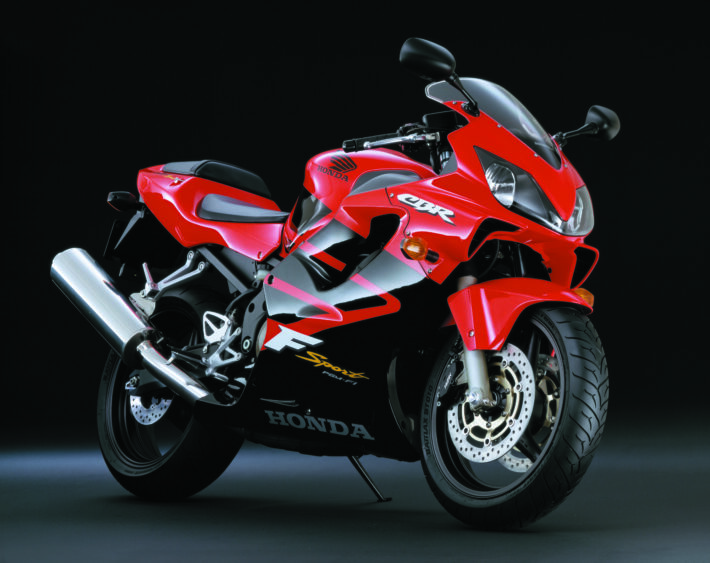
Trouble was on the horizon though: Yamaha’s YZF-R6 and Suzuki’s GSX-R600 offered a formidable challenge on track, and Honda needed a rethink. The CBR600RR would appear in 2003 as a proper Supersports race-replica, but in the interim we got this, the CBR600F Sport.
It had a series of subtle mods that were designed to help racers, without altering the basic package too much. Some of those mods were significant: the frame was modified with more strengthening ribs in the cast aluminium sections, there was a stronger swingarm pivot bolt and the forks had lighter aluminium damper cylinders instead of steel.
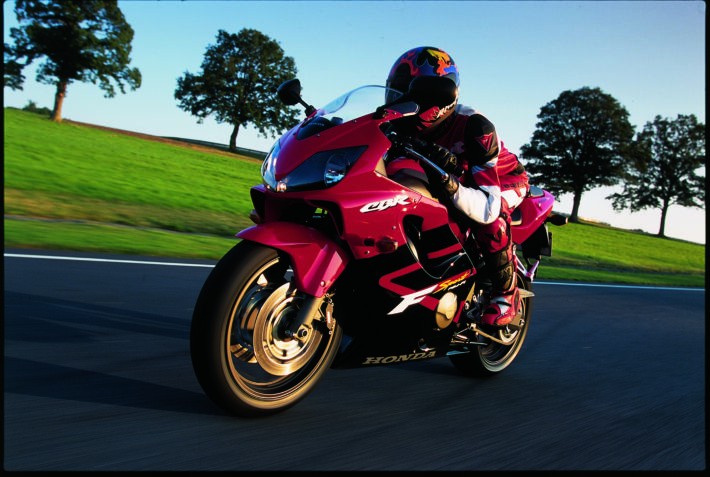
On the engine front, the valves used dual springs instead of single, and the cams were different. All of this merely facilitated race tuning though: peak power was the same as the stock bike at 109bhp. The chassis mods saved 1kg in weight (169 vs 170kg), but for road riders, the Sport won’t feel much different to the standard bike.
The big difference is the style: a proper two-part seat unit, and on the Valentino Rossi replica model, a stunning Nastro Azzurro MotoGP paint job.
2003 Ducati 999S
We’re not recommending the top-end 999R here: while they’re amazing bikes, they’ve already gone stratospheric in terms of price. Rather, we like the 999S or even the base 999, which are out there for decent cash. They’re a bit of an aberration in Ducati’s history: sitting between the gorgeous 916 family and the equally tasty 1098 Superbikes, the 999 (and 749) were far from conventional beauties.
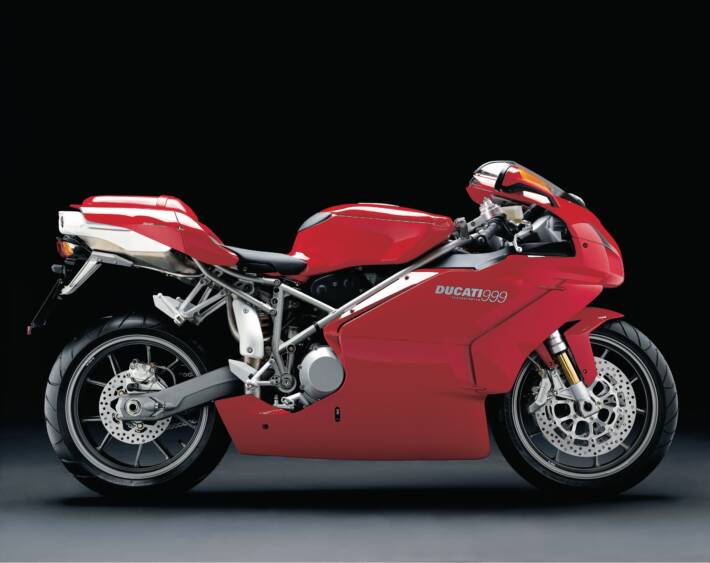
They were great bikes though, with a big step forward in chassis performance in particular over the 916. A new frame and double-sided swingarm gave a lower, longer, more stable ride, while the next-generation Testastretta V-twin (first used on the 996R) opened up much more potential in terms of power and tech.
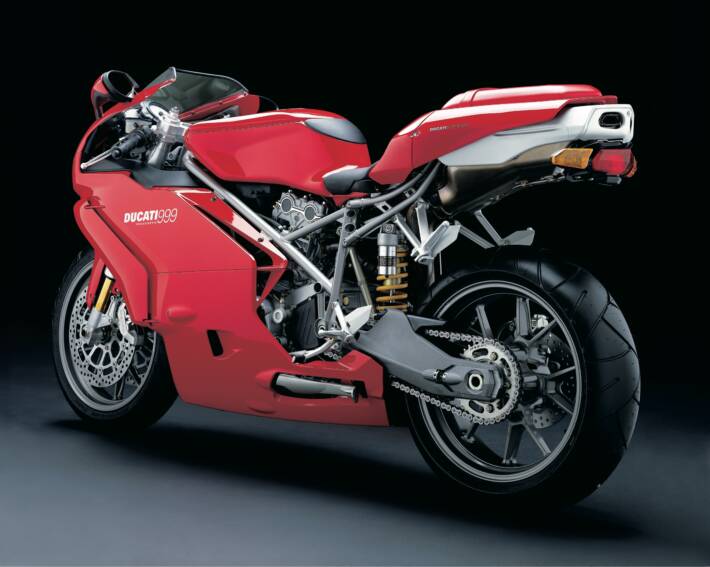
Nowadays, a nice 999S is a cracking road sports option. It’s different enough from anything else that it always stands out, and while the Pierre Terblanche-designed vertical stacked headlight fairing is still no beauty, it’s got a handsome feel of its own. The 999 is quick too (if not 2022-fast) with between 125-140bhp depending on year, and the handling is more than good enough.
Ducatis of this era are much better-made and more reliable than earlier bikes, but things like cam belts still need to be maintained religiously, and the desmodromic valve clearances are best dealt with by an experienced hand. Otherwise, look for the usual signs of abuse and neglect before buying – then enjoy this slightly different take on the Ducati Superbike theme.
2005 BMW K1200 R
The K1200R looks radical now – imagine what it was like in 2005. It was a naked version of the excellent K1200 S launched at the same time, with the same inline-four engine, twin-spar aluminium frame, Duolever front end and Paralever rear shaft drive. The sleek sport-touring fairing of the S was gone though, replaced by a radical Transformers-style set of naked bodywork.
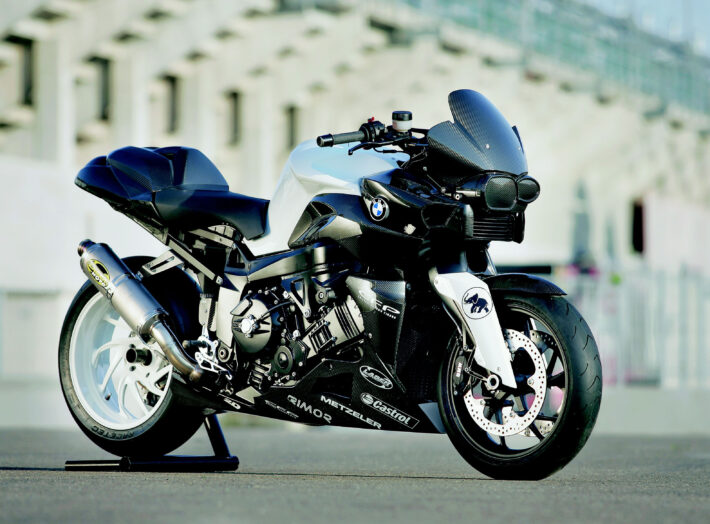
Nowadays, a 163bhp super naked is no big thing, but in 2005 it was nuts. Especially from BMW, which had poo-pooed outright power as a selling point for decades. Both the K1200 models were festooned with tech and performance, including radical options like quickshifters and electronic suspension. It was fast, of course, but also handled surprisingly well, considering the hefty 249kg wet weight.
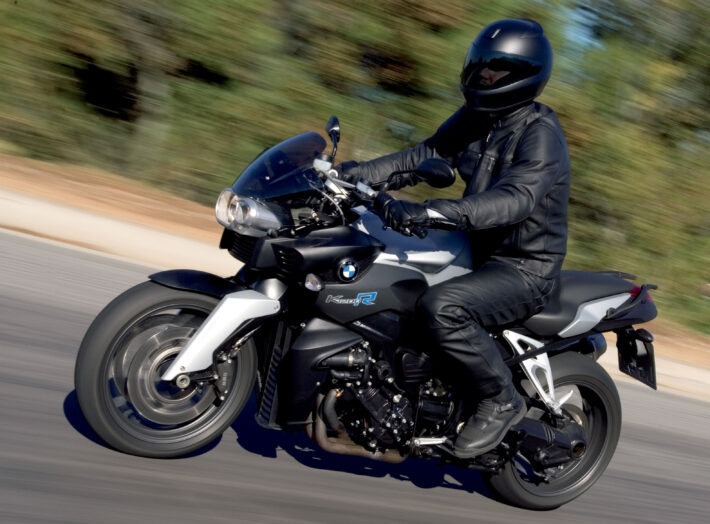
Now, the K1200 R still looks amazing, and has the performance to match. If you get a slightly later high-spec bike (or the 175bhp 1300 version from 2008) it will have 2010s-era tech like smart ABS and traction control, semi-active suspension, cruise control too. A usable everyday supernaked, with unique style and decent prices – a definite future classic contender.
1998 Suzuki TL1000 R
Like Honda with its VTR1000, Suzuki had launched its TL1000 range to take on the Ducati 916, with the TL1000 S road bike first, followed by this TL1000 R superbike contender. The R put the TL engine in a GSX-R-type chassis: twin spar aluminium frame, braced swingarm, track-ready suspension and brakes and full race replica bodywork.
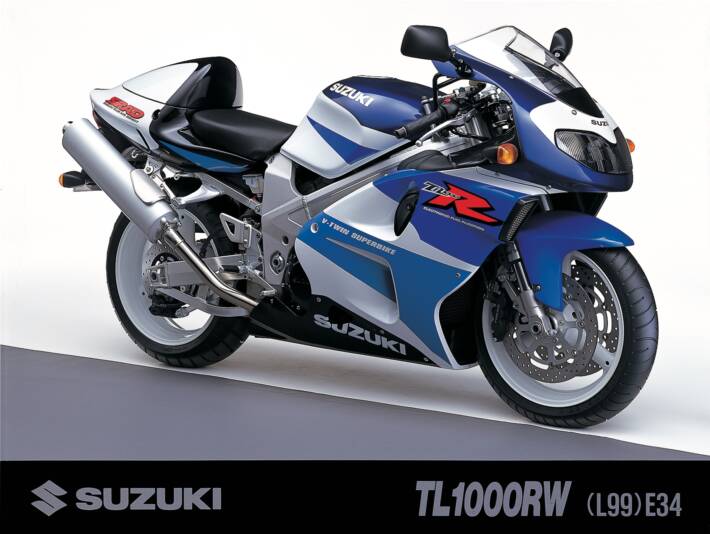
Neither of the TL models were perfect. The S had some edgy handling traits when pushed hard, while the R was, ironically, a bit too steady. When tuned for top-end power in the R, the 135bhp V-twin was slightly flat lower down, which sort of missed the point of a big twin…
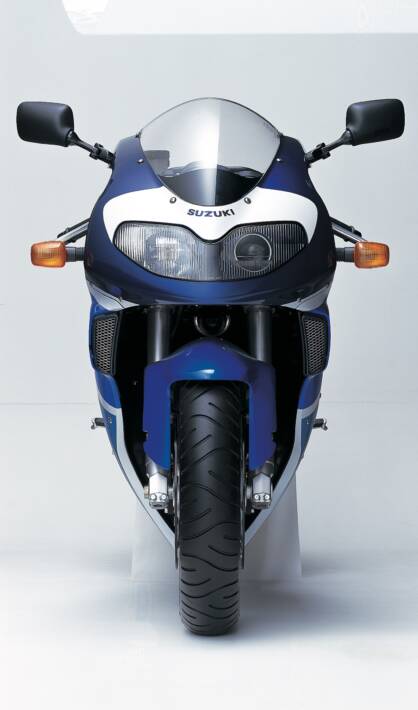
Now though, both TLs are in demand. The S is rarer and pricier, so we prefer the R as a future classic. It’s a handsome big beast, in the classic Suzuki colourways, and with some careful modern upgrades to suspension, tyres and brakes, makes a great, quirky sports bike. Get some quality exhausts on it and it will sound like nothing else too.
2001 Yamaha Fazer 1000
Yamaha’s brilliant Fazer 600 had done excellent work for the firm in the late 1990s – so a 1,000cc version was a bit of a no-brainer. Back in 2001 the litre-class roadster sector was a bit moribund: Suzuki’s Bandit 1200 and Kawasaki’s ZRX were decent enough, but there was space for something much sharper.
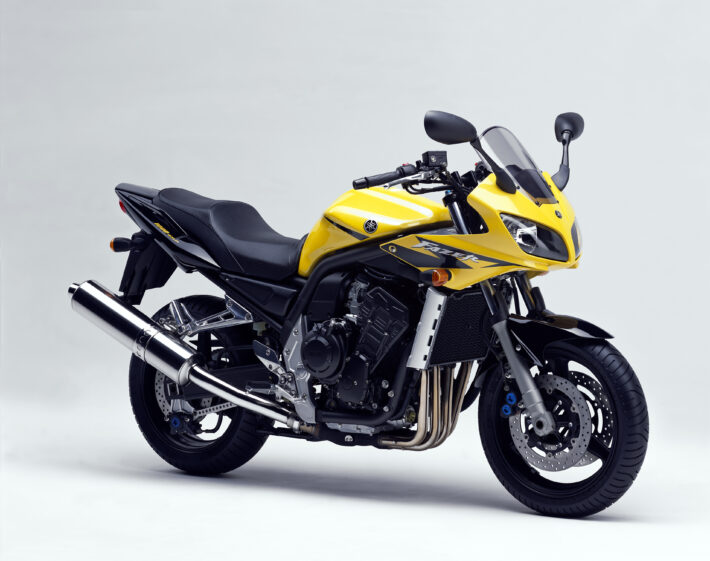
Enter the Fazer 1000, powered by a slightly detuned 143bhp R1 engine, in a steel tube frame with premium road chassis kit and a small half-fairing. It was a crazy thing: the R1 motor and upright riding position made wheelies almost unavoidable, but it could trundle around as well.
The carburetted engine was super-smooth and controllable, and the chassis was surprisingly capable too. It worked well two-up, would take luggage easily, and generally made a fabulous all-round daily superbike. You could even hustle it on track once you changed the tyres.
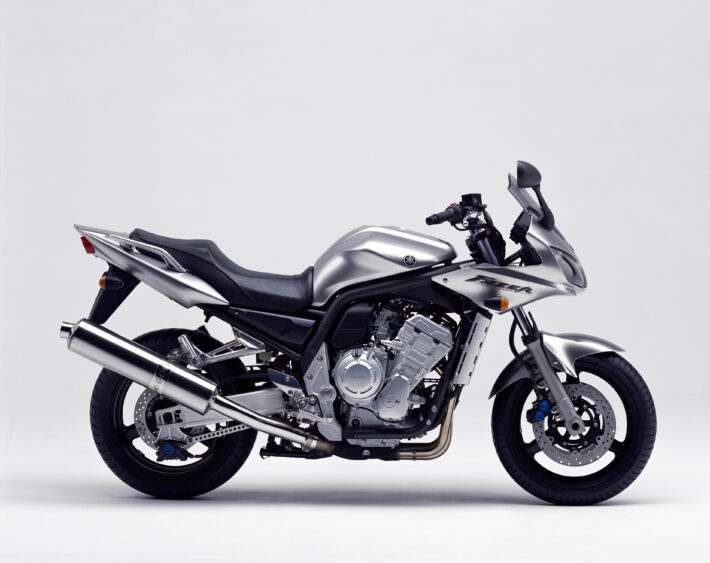
That all remains true today as well. And with no traction control, ABS, rider power modes or the like, it’s a fab portal back to simpler times – as well as a solid future classic machine.
2000 Kawasaki ZX-12R
Selling a bike on its ability to do nearly 200mph sounds pretty wild nowadays. But back in 1999, it was unremarkable. Honda’s Super Blackbird, then Suzuki’s Hayabusa, had both been launched with the unspoken promise of a near-tripling of the national speed limit, and Kawasaki had previous here too with its 175mph ZZ-R1100.
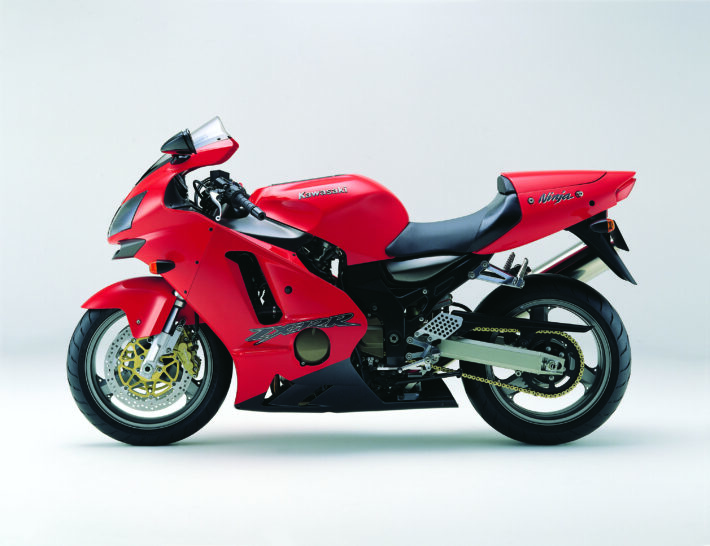
Enter the ZX-12R: an unlimited class superbike, with quite a sporty stance, similar styling to the ZX-9R and ZX-6R, and a wild 1,199cc inline-four making around 180bhp. It was high-tech, with a monocoque frame, fuel injection and cunning aero design, that even extended to little wings on the fork lowers, all rounded off with a brutal Ram-Air intake scoop.
Against the Hayabusa, the 12R was better on track, but less useful as a fast tourer. Pillion space was miserable, the motor was actually a bit revvy, and the committed riding position was tiring.
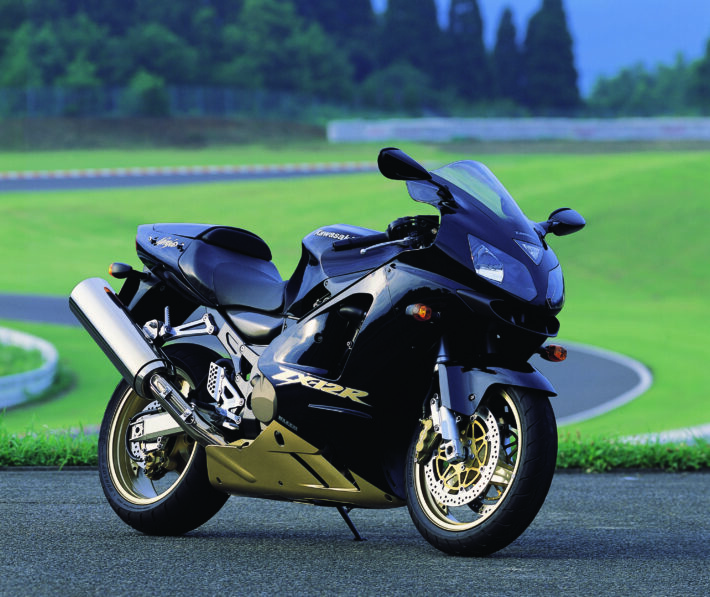
Now, it looks incredible, with some of design cues looking more like a spaceship from a 1960s sci-fi film than a motorbike. Find a stocker, with the gigantic standard exhaust can and the classic green paint job, and it will grab attention wherever you park up.
It remains a mental fast option too: 180bhp and 210kg dry are not bad numbers, and with fresh 2023 tyres plus well-fettled brakes and suspension, it’ll liven up anyone’s day…
2001 Suzuki GSX-R1000 K1
Yeah yeah, everyone wants a later 2005 K5 GSX-R1000, and okay, if you find one cheap in unmolested condition, then go ahead. The cool kids have already moved on though, to the OG litre Gixxer: this 2001 K1 model that kicked it all off.
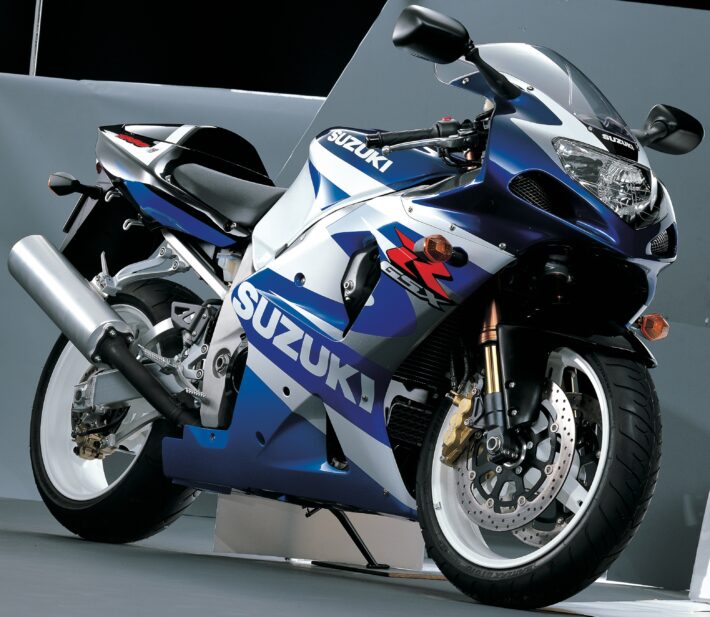
Yamaha had been going gangbusters with its R1 for a few years, Honda’s FireBlade had lost its way and Kawasaki was also going through a rough patch. Enter this: a GSX-R750-based litre bike, with storming 160bhp engine performance yet handling little changed from the superb 750.
Suzuki had worked hard to keep mass down, so it was lighter than the R1 at 170kg dry, yet topped it on power and torque. Running gear was tried-and-tested GSX-R750 kit, tweaked for the extra performance, and the frame and swingarm were also nicely beefed up to suit.
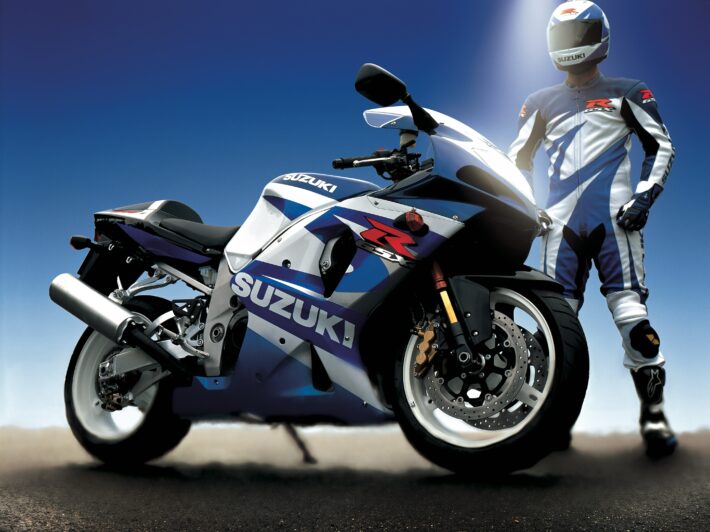
Now, the K1 looks a little bit on the chunky side compared with younger, more svelte rivals. There’s something utterly timeless about it though, especially in one of the traditional Suzuki colourways. As a daily rider, it’s great: comfy, stable and fast, and if you want to check out the odd trackday, you’ll have a ball with the appropriate tyres, brake pads and suspension tweakings.
2006 Triumph 675 Daytona
Triumph makes plenty of so-called ‘modern classics’ like the Bonneville, which, while they have slick classic styling, are really just retro-designed roadsters. When it comes to a ‘future classic’ though, we’d plump for this beastie: the 675 Daytona triple.
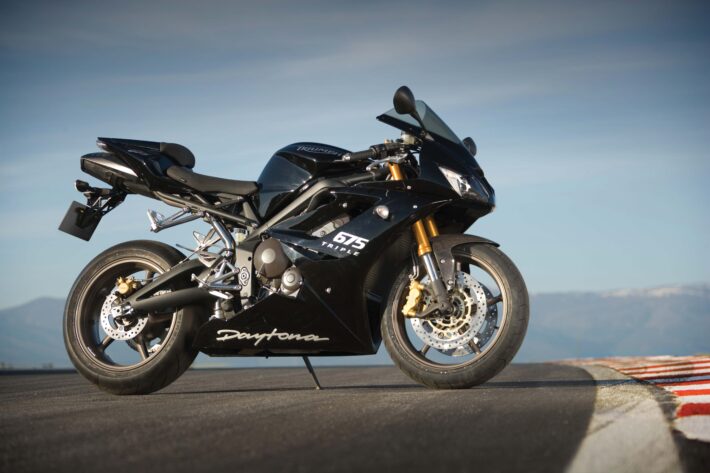
A genuine supersport buzzbomb, it took on the cream of Japanese 600-class sportsbikes in the mid-2000s, and won. The three-cylinder engine split the difference between the screaming inline-fours from the far east, and the booming V-twin 749 from Ducati, managing to top both of those options.
It had very nearly as much peak power as the fours, with the same sort of strong midrange drive as the V-twin, producing a fast, satisfying powerplant that worked well on road and track.
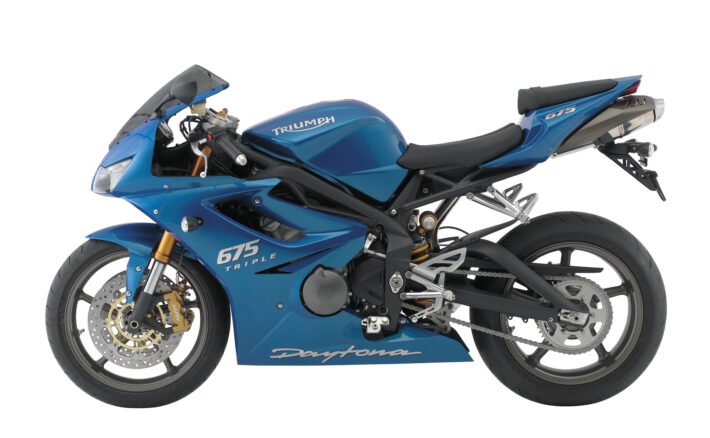
The chassis was just as capable: a lightweight aluminium frame and braced dual-sided swingarm looked almost as tricksy as a Ducati, but was as easy to use as a Japanese bike. Running gear was upper-middle class, with Japanese components from Kayaba and Nissin, and the styling was beguiling, complete with the then-trendy underseat exhaust outlet.
Raw performance specs tell the story: 123bhp and 165kg dry matched the best in class, and Triumph had by now learnt to build reliable, well-made bikes that worked properly. It was no surprise when the 675 topped 600 group tests across Europe’s bike magazines.
Now, an early, original 675 is becoming a rare thing, because so many were tuned, crashed or raced (or all three…), which makes them prime future classic material we reckon.
Aprilia RSV Mille
No-one expected this. Aprilia was a small-capacity bike master, producing gorgeous, jewel-like 125 race-replica bikes, winning 125 and 250 GP titles, and generally making the most of its comfy niche from the Noale factory near Venice. Then, in 1998, it rocked up with the RSV Mille: a hardcore, big-boned litre superbike aimed squarely at its Bolognan rival Ducati.
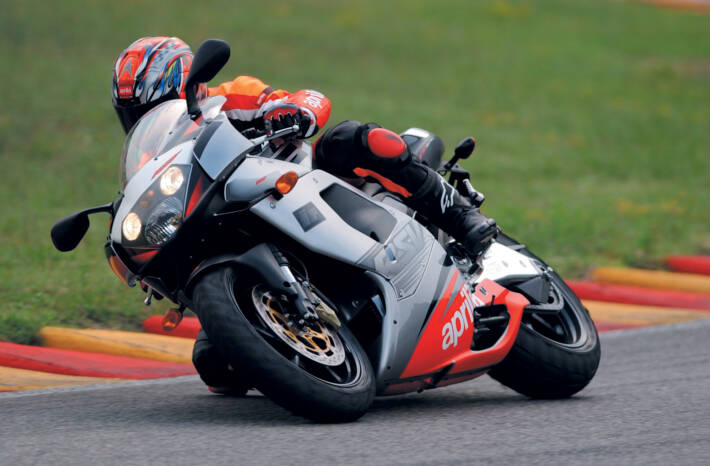
The RSV was no 916 – it couldn’t touch Tamburini’s masterpiece for style – but it could match it in terms of performance, albeit in a very different manner. The Aprilia used a 60° V-twin motor from Austrian engine maker Rotax that made a healthy 129bhp thanks to high-tech design: dry-sump oiling, four-valve DOHC heads, over-square layout with a massive 97mm bore x 67.5mm stroke, plus advanced fuel injection.
The chassis was similar in concept to that on the firm’s 125 and 250 racers: twin-spar aluminium frame, braced swingarm, track-ready running gear, all wrapped up in a racy full fairing.
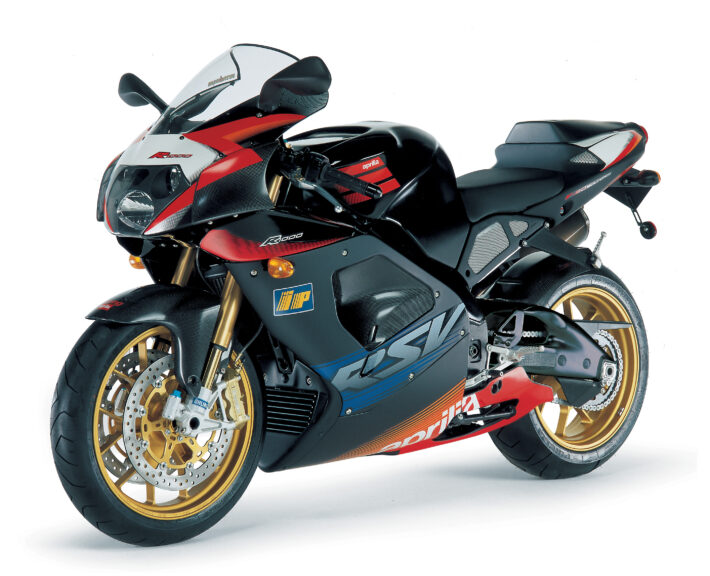
The RSV was a bit heavy at 210kg, but still made an awesome superbike for its day. It was more ‘Japanese’ than the Ducati, and could stand up against the big V-twins from Honda and Suzuki too. Later bikes came with high-end Öhlins suspension and forged OZ wheels.
Best of all, the RSV has always been plentiful, and relatively cheap. That has to end some day though (they’re not making any more of them!), and a 1998 or 99 RSV Mille, or a 99-2000 RSV Mille R with the posh chassis is still a fab buy, and a genuine future classic.